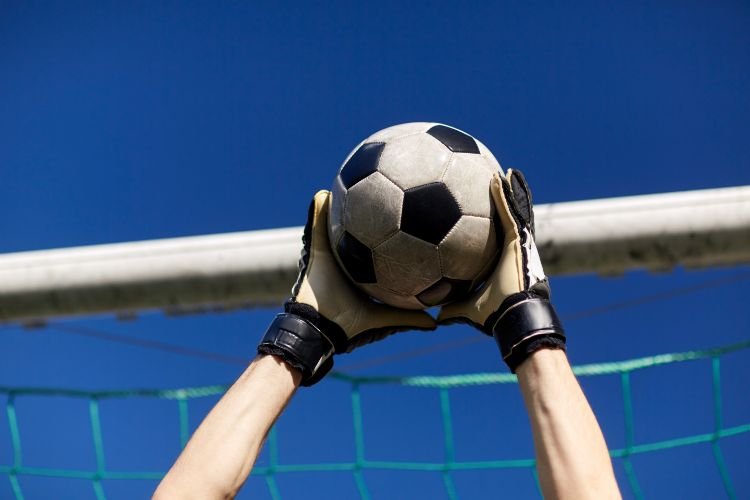Mastering the art of decision making is crucial for soccer goalkeepers. It’s a split-second decision that can change the game. Should they stay on their line or dash out to intercept? This balance between aggression and caution defines great goalkeepers. Let’s explore the intricacies of making these pivotal decisions.
Understanding the Goalkeeper’s Role
Goalkeeping is more than just saving shots. It’s about anticipation, reading the game, and making critical decisions. A goalkeeper’s choice to stay or come out can turn them into a hero or a scapegoat. But how do they decide?
Assessing the Situation
First, goalkeepers evaluate the immediate threat. They consider the attacker’s position, ball speed, and their own defenders’ locations. Quick thinking and situational awareness are key.
Communication and Coordination
Good goalkeepers constantly communicate with their defense. This teamwork helps them decide when to intervene outside the penalty box.
Criteria for Coming Out
Deciding when to come off the line is a nuanced part of goalkeeping. It’s not just about reaction—it’s about prediction, strategy, and understanding the game’s flow. Let’s dive into the details.
How Close Is Too Close?
One of the first considerations is the distance of the ball from the goal. A goalkeeper must quickly gauge whether the ball is within a sprint’s reach. If it is, they might need to act fast. The goal is to narrow down the attacker’s options before they become a direct threat.
- A short distance demands quick action.
- Longer distances might allow for a moment’s pause, to better assess the situation.
Reading the Attacker’s Pace
The speed of the attacking player is another critical factor. A swift attacker can close distances quickly, changing the dynamics in a heartbeat. Goalkeepers must be adept at reading both the player’s pace and their potential to control the ball at that speed.
- Fast attackers require a proactive approach.
- Slower attackers might give the goalkeeper more time to make a decision.
Angle of Attack
The angle of approach significantly affects a goalkeeper’s decision to come out. An attacker coming from a wide angle poses a different kind of threat compared to one charging straight down the center.
- Narrow angles offer goalkeepers an advantage, making it safer to confront the attacker.
- Wide angles might necessitate staying back, as the goal coverage area increases.
What About the Defensive Line?
The position and effectiveness of the defensive line are crucial. A well-organized defense can buy time, reduce pressure on the goalkeeper, and even mitigate the need to come out.
- A strong backline allows goalkeepers to focus more on directing traffic and less on emergency sprints.
- A breached defense might force the goalkeeper to take more risks.
Is Communication Key?
Yes, without a doubt. Continuous dialogue with the defense helps keep everyone aligned. This communication is vital in making split-second decisions. It also ensures that when a goalkeeper decides to come out, the defense adjusts accordingly to cover potential gaps.
- Effective communication can mean the difference between a successful intervention and a missed opportunity.
- Lack of communication can lead to confusion, often resulting in goals conceded.
These factors combine to inform a goalkeeper’s decision-making process in real-time. Each situation is unique, and the best goalkeepers are those who can quickly synthesize information from multiple sources, anticipate the play’s development, and make the correct decision under pressure.
Training and Reflexes
Goalkeepers refine their decision-making skills through rigorous training. Drills simulate various scenarios, enhancing their reflexes and judgment.
Helpful Hint:
Practicing under simulated pressure conditions can vastly improve a goalkeeper’s decision-making speed and accuracy.
The Psychological Aspect
Confidence plays a huge role. A goalkeeper’s psychological state can influence their decision to come out or stay. Mental toughness and resilience are as important as physical agility.
Pros and Cons of Coming Out
Let’s weigh the advantages and disadvantages of a goalkeeper deciding to leave their line.
Advantages
- Disrupts the attacker’s plan.
- Can prevent clear scoring opportunities.
- Boosts the defensive line’s confidence.
Disadvantages
- Risk of being bypassed by the attacker.
- Potential for conceding a goal from a long distance.
- Leaves the net unguarded.
FAQs
Bottom Line
Decision making for soccer goalkeepers is a blend of art and science. It involves quick thinking, precise judgment, and a deep understanding of the game. Through training, experience, and mental fortitude, goalkeepers can master the delicate balance of when to stay or come out. Their choices not only impact the game’s outcome but also define their legacy in the soccer world.

